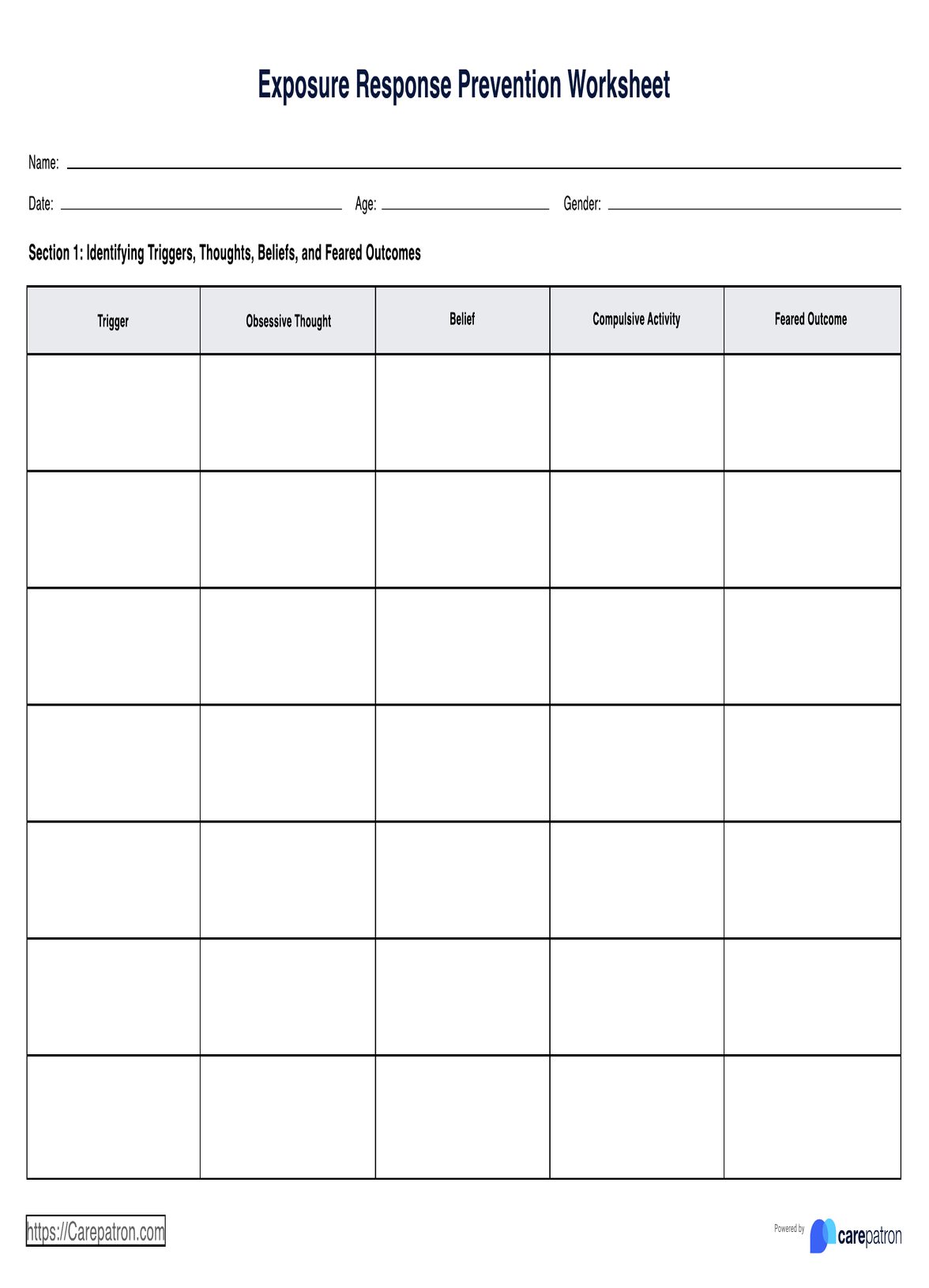To use the worksheet, follow the step-by-step instructions provided in the guide. Begin by filling out the Identifying Triggers, Thoughts, Beliefs, and Feared Outcomes section, and then work with your therapist to develop an exposure hierarchy. Log your exposure exercises in the Exposure Log section and review your progress regularly with your therapist.

Exposure Response Prevention Worksheet
Discover our comprehensive Exposure Response Prevention Worksheet to help you and your therapist effectively manage OCD and anxiety symptoms. Download our free PDF today!
Exposure Response Prevention Worksheet Template
Commonly asked questions
Interpret the worksheet by analyzing the patterns and connections between triggers, thoughts, beliefs, compulsive activities, and feared outcomes. With your therapist's guidance, evaluate your progress in managing anxiety and reducing compulsive behaviors over time.
The worksheet serves as a tool for tracking and documenting the progress of ERP therapy. It helps clients and therapists to identify triggers, thoughts, beliefs, compulsive activities, and feared outcomes, as well as to log exposure exercises and measure anxiety levels. This information can then be used to adjust therapy and improve overall effectiveness.
EHR and practice management software
Get started for free
*No credit card required
Free
$0/usd
Unlimited clients
Telehealth
1GB of storage
Client portal text
Automated billing and online payments











